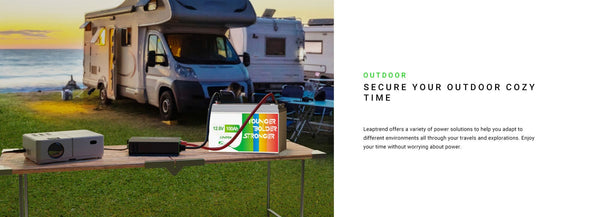What is the Difference Between LFP and NMC Batteries?
With the growing popularity of electric vehicles (EVs) and renewable energy storage, understanding the differences between battery technologies is crucial. Two of the most common types of lithium-ion batteries used today are Lithium Iron Phosphate (LFP) and Nickel Manganese Cobalt (NMC) batteries. Each of these battery chemistries has distinct characteristics, advantages, and applications. This guide will explore the differences between LFP and NMC batteries in detail, providing insights into their composition, performance, cost, safety, and typical uses.
What are LFP and NMC Batteries?
LFP Batteries (Lithium Iron Phosphate):
Chemistry: LFP batteries use lithium iron phosphate as the cathode material and graphite as the anode.
Voltage: They typically have a nominal voltage of around 3.2V per cell.
Energy Density: Lower compared to NMC, usually around 90-120 Wh/kg.
Cycle Life: High cycle life, often exceeding 2,000 cycles.
Safety: Excellent thermal and chemical stability, making them very safe.
Cost: Generally lower cost due to the use of abundant and non-toxic materials.
NMC Batteries (Nickel Manganese Cobalt):
Chemistry: NMC batteries use a combination of nickel, manganese, and cobalt as the cathode materials, with lithium as the primary element.
Voltage: They typically have a nominal voltage of around 3.7V per cell.
Energy Density: Higher energy density, ranging from 150-220 Wh/kg.
Cycle Life: Moderate cycle life, typically between 1,000 to 2,000 cycles.
Safety: Good safety profile, but less stable than LFP under extreme conditions.
Cost: Higher cost due to the use of more expensive materials like cobalt.

Key Differences Between LFP and NMC Batteries
Energy Density:
LFP: Lower energy density, which means they store less energy per unit weight. This makes them bulkier and heavier for the same capacity compared to NMC batteries.
NMC: Higher energy density, allowing them to store more energy in a smaller and lighter package. This makes them ideal for applications where space and weight are critical, such as in electric vehicles.
Cycle Life:
LFP: Known for their long cycle life, LFP batteries can endure more charge and discharge cycles before their capacity significantly degrades. This makes them suitable for applications requiring frequent cycling, such as renewable energy storage and electric buses.
NMC: While they have a shorter cycle life compared to LFP batteries, NMC batteries still offer a reasonable lifespan suitable for consumer electronics and passenger EVs.
Safety:
LFP: Superior safety due to their stable chemical structure. LFP batteries are less likely to overheat and catch fire, making them ideal for applications where safety is a top priority.
NMC: While generally safe, NMC batteries are more prone to thermal runaway and require additional safety mechanisms to prevent overheating and potential fires.
Cost:
LFP: Typically lower in cost because of the use of more common and less expensive materials. This makes LFP batteries a cost-effective option for large-scale energy storage solutions.
NMC: More expensive due to the use of costly materials like cobalt and nickel. The higher cost is justified by their superior energy density and performance characteristics.
Performance in Different Temperatures:
LFP: Performs well across a wide range of temperatures and is less prone to performance degradation in high-temperature environments.
NMC: May experience performance issues at extreme temperatures and typically require thermal management systems in EV applications.

Applications of LFP and NMC Batteries
LFP Batteries:
Electric Buses and Trucks: Due to their long cycle life and safety.
Grid Energy Storage: Ideal for renewable energy storage systems because of their durability and cost-effectiveness.
Solar Energy Systems: Frequently used in residential and commercial solar energy storage.
NMC Batteries:
Electric Vehicles: Preferred in passenger EVs due to their high energy density and balance of performance characteristics.
Consumer Electronics: Common in smartphones, laptops, and other portable devices where compact size and high energy density are crucial.
Power Tools: Used in cordless power tools that require high power and energy density.
Both LFP and NMC batteries have unique advantages and are suited to different applications. LFP batteries offer exceptional safety, long cycle life, and cost-effectiveness, making them ideal for energy storage and heavy-duty applications. NMC batteries provide high energy density and performance, making them the preferred choice for electric vehicles and portable electronics. Understanding these differences can help in selecting the right battery type for specific needs and applications, ensuring optimal performance and efficiency.
























